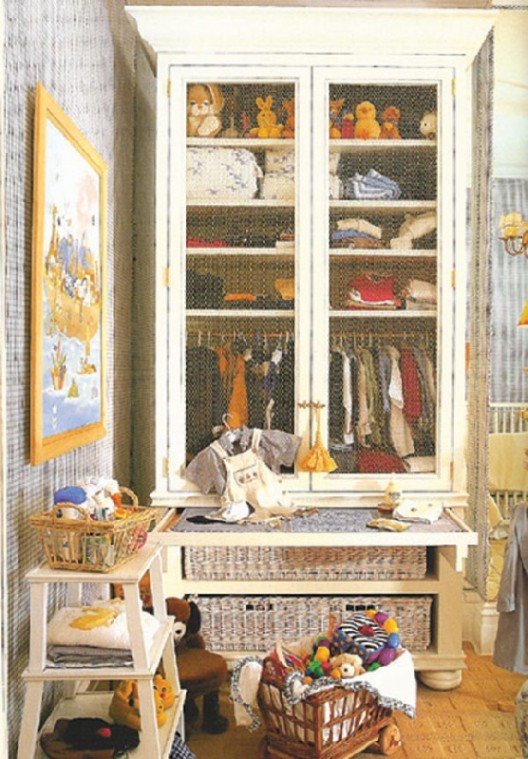Armoires
– originally designed during the Middle Ages to hold armor –
have become, in modern times, an essential element in any
decorator’s design scheme.
This handsome, versatile and functional piece of furniture can
work in any room of your house.
Armoires – originally designed during the Middle Ages to hold armor – have become, in modern times, an essential element in any decorator’s design scheme.
This handsome, versatile and functional piece of furniture can work in any room of your house.
Armoires come in a variety of finishes and shapes and can easily satisfy the pocketbooks of a wide range of buyers.
Where once it was difficult to find a new, affordable one with gracious, vintage styling, today you can find armoires to fit any style, any decor and any price to match any budget.
Many armoires are purchased for use as entertainment centers: fitted to accommodate televisions, DVD players, VCRs, stereo and sound equipment, and to house a library of videos and DVDs.
Yet many still purchase them primarily for wardrobe duty – a bedroom or dressing room piece to hold sweaters, shirts, shoes and the all accoutrements of fashion.
But the beauty of this freestanding cupboard is such that it can be put into service for so much more.
Because an armoire is often one of the largest pieces of furniture you will own, it tends to become a focal point in any room.
However, as with a book or a bottle of wine, the outside appearance often has nothing to do with the contents within.
The most ornate, antique armoire may be an anachronistic vessel for the high-tech electronics housed inside.
Conversely, a clean-lined modern piece may hold a treasure trove of delicate collectibles.
Here are some of my favorite armoire applications as well as some practical considerations before buying or customizing a treasured antique:
n The “anywhere” pantry: A good friend of mine, possessed with lots of great style and entertaining savvy, was also very tight on space.
Whenever she invited guests for dinner she used the most wonderful collection of servings pieces: cake pedestals, hand-hammered copper trays and bowls, fruit, tart and other specialty plates, stemware and tiered racks.
When curiosity finally got the better of me, I asked her where she kept everything in her tidy, compact kitchen and she confessed that her pantry was actually in the elaborately painted armoire in the living room.
A peek inside revealed shelves and vertically-sectioned cubicles painted a lovely shade of robin’s egg blue; the inside all conveniently fitted to hold serving plates and trays, dinnerware and stemware to keep her treasures safe, dust free, and out-of-view.
n Kids’-room functionality: New or unpainted armoires are easy to adapt for children’s bedrooms or playrooms.
We photographed a nursery for my “Bedrooms” book that contained a new armoire customized with a slide-out, changing-table tray, “easy-on-the-fingers” basket drawers and a clothing rod perfectly suited for small jackets and shirts.
As the baby grows, the changing table can become a writing surface and the clothing rod can be removed for toy and book storage.
n The complete home office: Whether to store high-tech computer equipment or low-tech pens and paper, an armoire is the perfect place to keep your home office out-of-sight when its contents don’t need to be top-of-mind.
n Home exercise center: At the most recent High Point furniture market I saw an armoire marketed as the complete workout area. Doors opened to reveal a treadmill, folded and awaiting a workout, shelves designed for weight storage and even a place to plug in the workout television.
In my yoga room I have two matching armoires that contain my yoga mat, tapes, special exercise equipment, light weights and music for inspiration.
Take care when converting. Antique armoires can be converted to most any use. However, their value will be diminished if they are altered to an extent that they can’t be returned to their original condition.
If you are refitting an antique interior of a specific purpose, it is a good idea to save the original fittings in case you later opt for restoration or resale.
There also are a number of things to consider before purchasing.
Because armoires are big, they can be a challenge to fit into apartments, through small doorways or to make the turns into an upstairs space.
Be sure to measure all passageways before trying to fit a large one into your home. I’ve known New Yorkers who have purchased armoires and then spent far more money to get them into their apartment than the piece cost originally – often paying movers to hoist them up the side of the building and into a window or give them a ride on top of an elevator.
The versatile, functional, stylish armoire allows for the creation and organizing of a personal space that can be enjoyed at will and then closed off and shuttered.
They help bring order from chaos or extra space where presumably was none, often carrying inside a hint of secrets and treasures no ordinary closet can convey.













